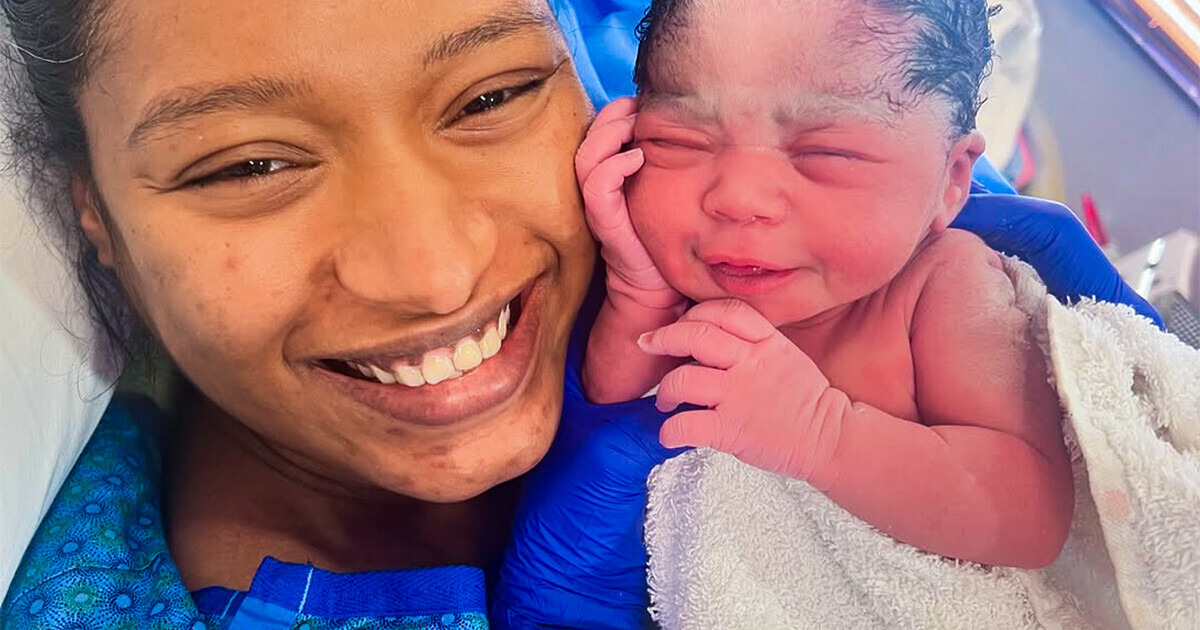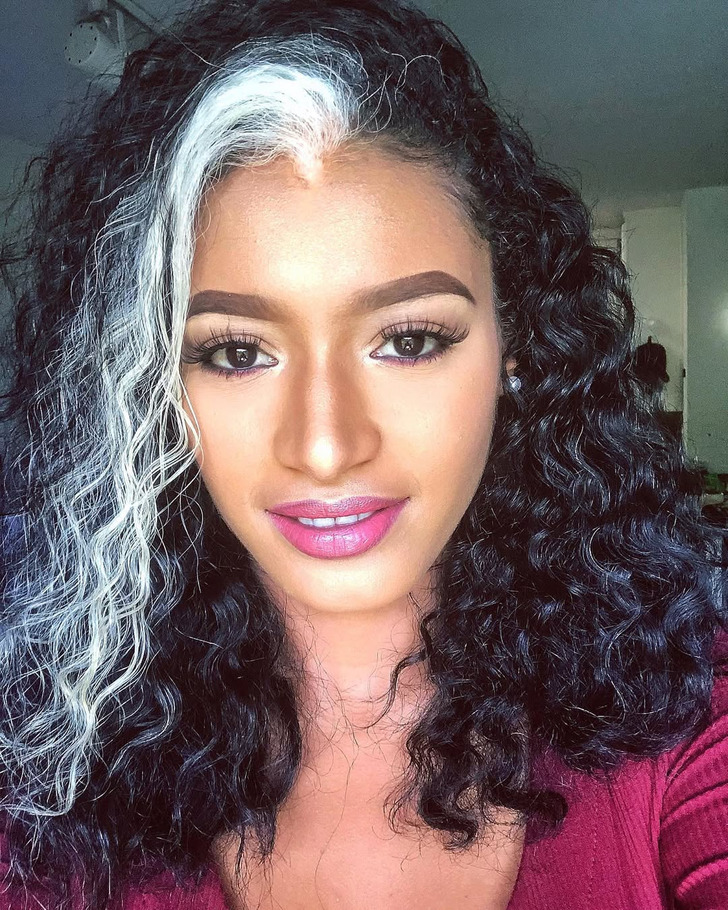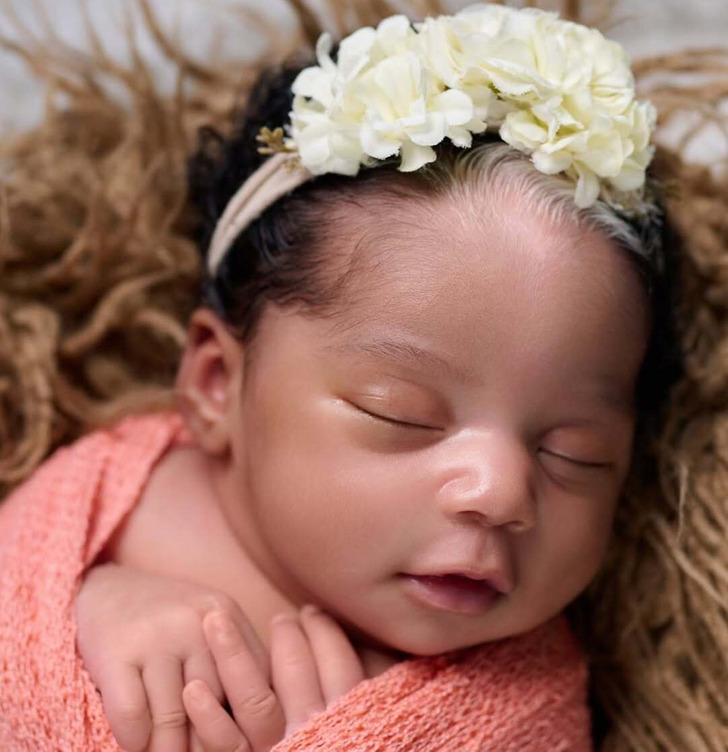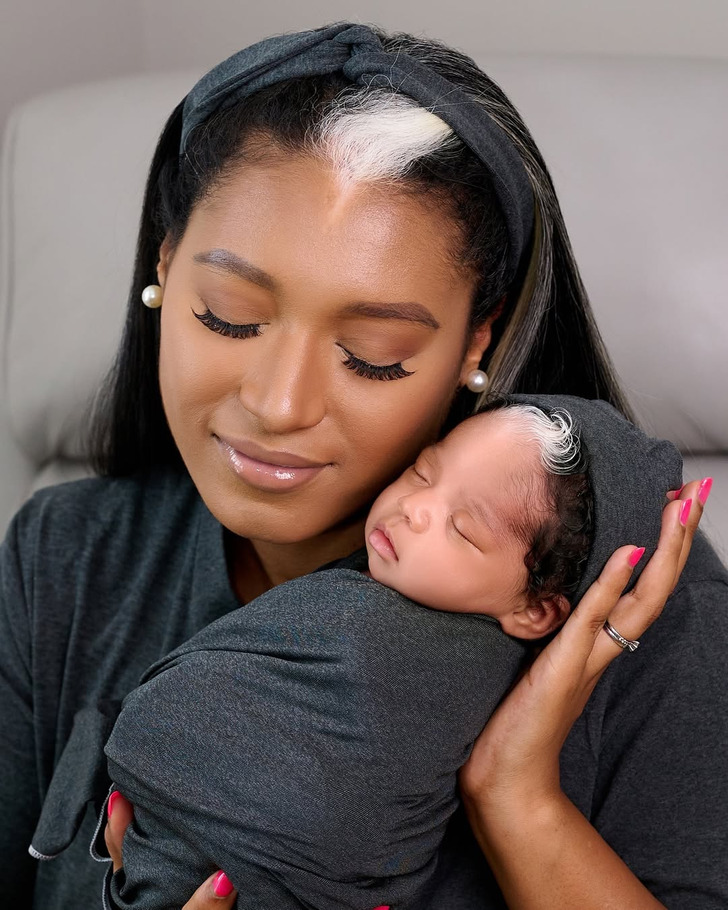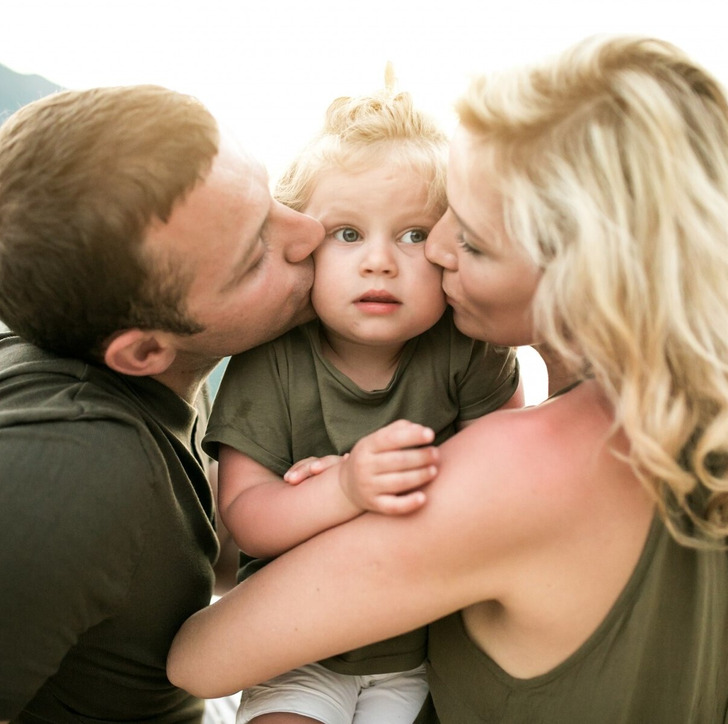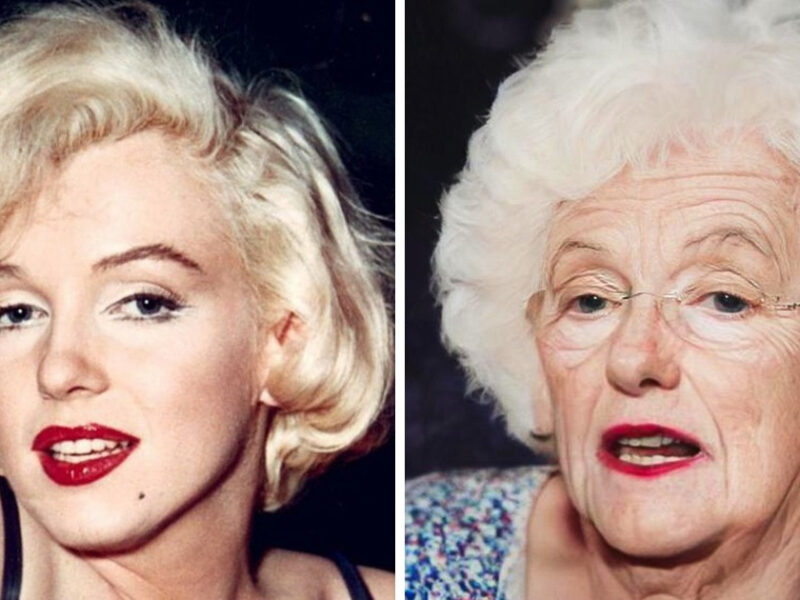“You Must Be a Unique Being, Even Your Baby!” Mother Passes Rare Trait to Her Baby / Bright Side
Growing up with a white forelock, this mom knows what it’s like to feel different. But thanks to her parents, she transformed her rare birthmark into a source of pride. Today, she celebrates not just her journey but also her baby daughter, born with the same beautiful feature.
34 years ago, Elma Godwin was born with a white forelock—a rare birthmark caused by a condition called piebaldism.
She vividly recalls the challenges of growing up with this distinctive feature, particularly during her teenage years. “I especially struggled during my teenage years, where I received a lot of unwanted attention,” she shares. “I always felt different from everyone else.”
While her peers might have viewed her difference with curiosity or judgment, her parents became her greatest support. They instilled in her a sense of pride and strength. “Fortunately for me, my parents were my rock. They taught me to be proud of my unique difference, making me understand I was special while also being no different than anybody else.”
Her parents encouraged her to embrace her appearance with confidence, and over time, she learned to see her white forelock as a symbol of her identity. “As I got older, I learned to rock my birthmark with attitude and embraced my identity with all the blessings that have come with it,” she proudly states.
Recently, Elma welcomed a baby girl born with the same white forelock.
Life has a way of coming full circle. “Now our growing family has been blessed with another special baby girl that was born with the same beautiful birthmark, just like her mama. I am no longer ‘the only one’ in my family,” she joyfully explains.
This shared genetic trait is not just a physical resemblance but a profound connection between mother and daughter. With her own experiences in mind, the mother is determined to guide her daughter through life with the same unwavering support her parents gave her. “With firsthand experience, it will give me great joy to help my daughter own her gift the same way my parents helped me.
She is confident that her daughter will face the world with love and protection from her family, including her parents, big sister, and their faith.
They both receive a lot of love from people.
- So beautiful, and your story is so touching. It’s funny how that same thing that makes you exceptionally beautiful was a thing that made you feel different from everyone else.
- Your birthmark is one of the coolest I’ve ever seen! She’ll have a rocking time with it! ❤️❤️❤️❤️
- It’s so crazy how the world works! I always thought, “OMG, she has such beautiful hair with that silver patch. She reminds me of Storm from the X-men.” Just beauty all around.
- I admire your white hair. You must be a unique being, even your baby 😍😍
Piebaldism is a genetic condition.
It’s caused by mutations in a gene and characterized by the absence of pigment in certain areas of the hair or skin. The condition is inherited—a parent with the trait has a 50% chance of passing it on to their child. While it is relatively rare, piebaldism is harmless and does not affect overall health.
Experts suggest that unique genetic traits like piebaldism can significantly shape identity and self-esteem.
How you can help kids embrace what makes them special.
Raising a child with a unique physical feature requires understanding, compassion, and proactive communication. Here are some tips for parents.
- Educate and normalize: Teach your child about their unique trait in simple, positive terms. Use books, videos, or stories to show them that differences are normal and beautiful.
- Encourage pride: Celebrate their uniqueness and emphasize that it makes them special. Share your own stories or find role models who embrace similar traits.
- Provide tools for confidence: Equip your child with kind responses to questions or comments about their appearance. Role-play scenarios to help them feel prepared.
- Create a supportive environment: Surround your child with friends, family, and educators who appreciate and respect diversity.
- Highlight their strengths: Remind your child that they are more than their appearance by encouraging their talents, hobbies, and passions.
